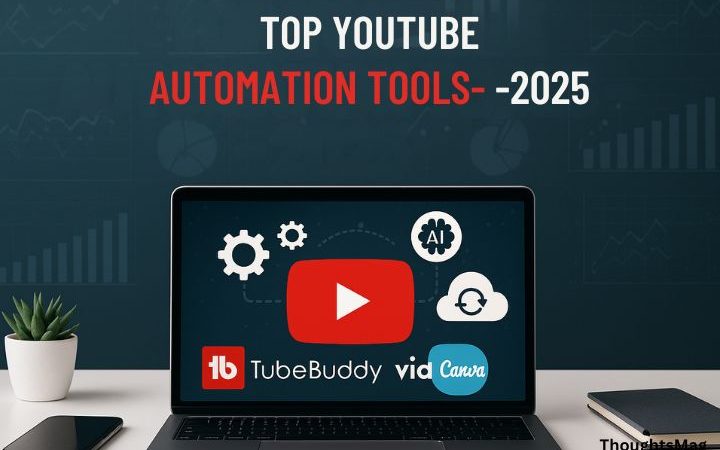Developing a Website Marketing Strategy That Works for the Scale of Your Business
In today’s highly competitive digital landscape, a tailored website marketing strategy is crucial for businesses of all sizes. This article will provide an overview of key elements to consider when developing a website marketing strategy that works for the scale of your business, whether small, medium, or large.
Understanding your business scale
Small businesses
Small businesses typically have limited resources, a localized target audience, and a unique selling proposition. Focusing on the most effective marketing strategies that cater to these characteristics and deliver the best return on investment is essential.
Medium-sized businesses
Medium-sized businesses generally have increased resources and a regional or national target audience. Their marketing strategies need to focus on market positioning to differentiate themselves from the competition while expanding their reach.
Large businesses
Large businesses have abundant resources and a global target audience. Their marketing strategies should prioritize brand reputation and international growth, utilizing their resources to maintain a strong online presence.
Setting website marketing goals
Goal-setting frameworks
Using a goal-setting framework like SMART (Specific, Measurable, Achievable, Relevant, Time-bound) can help you create clear and achievable objectives for your marketing strategy.
Key performance indicators (KPIs)
Select KPIs that align with your marketing goals, such as website traffic, conversion rates, or social media engagement, to measure the effectiveness of your efforts.
Aligning goals with business scale
Ensure your marketing goals are aligned with your business scale, focusing on objectives that contribute to growth and success for your specific size and target market.
Developing a content strategy
Quality vs. quantity
Focus on creating the best high-quality content and header bidding solutions that provides value to your audience rather than producing a large volume of low-quality material.
Target audience personas
Develop detailed personas for your target audience better to understand their needs, preferences, and pain points. This will enable you to create content that resonates with them.
Tailoring content to your business scale
Adapt your content strategy based on your business scale, considering the resources available and the size of your target market.
Content formats
Experiment with various content formats types, such as blog posts, videos, and infographics, to determine which content best engages your audience.
Search engine optimization (SEO)
On-page and off-page SEO
Optimize your website through on-page (e.g., meta tags, keyword placement) and off-page (e.g., backlinks, social media) SEO techniques to improve its visibility on search engines.
Keyword research
Conduct thorough keyword research to identify relevant terms and key phrases that your target audience is likely to be searching for, and optimize your content accordingly.
Competitor analysis
Analyze your competitors’ websites and SEO strategies to identify areas where you can gain a competitive advantage.
Adapting SEO strategy to business scale
Adjust your SEO strategy based on your business size, focusing on techniques that deliver the best results for your specific scale.
Web design
The design of your website plays a critical role in its overall performance and success in online marketing. An optimized web design can enhance user experience, improve SEO, and increase conversion rates. Consider the following aspects when designing your website for better performance.
Mobile-friendliness
Ensure that your website is mobile-friendly and responsive, adapting to various screen sizes and devices. This will improve user experience and positively impact your search engine rankings.
Site speed
Optimize your website’s loading speed by compressing images, minifying code, and using caching techniques. Faster-loading websites are known for providing a better user experience and are more likely to rank higher in search results.
User experience (UX) design
Focus on creating an intuitive and easy-to-navigate website that meets or even exceeds the needs and expectations of your target audience. This includes having a clear site structure, using descriptive headings, and incorporating visual elements to guide users through your content.
Accessibility
Make your website accessible to all users, regardless of their abilities or disabilities. This can be achieved by using descriptive alt text for images, providing transcripts for audio content, and ensuring that your site can be navigated using a keyboard.
On-page SEO elements
Incorporate essential on-page SEO elements into your web design, such as well-structured URLs, descriptive title tags and meta descriptions, and proper use of header tags. These elements help search engines better understand your content and improve your chances of ranking higher in search results.
Don’t Be Afraid to Seek Help
If you’re uncertain about how to correctly implement these web design-related improvements, seeking professional assistance from a NYC website and UX design company is highly recommended.
Choosing one of the most experienced web design and SEO companies that earn that reputation in a city like New York can help you make the necessary adjustments to optimize your website and enhance its overall performance.
Doing so can ensure that your website marketing strategies yield the best possible results, giving you a competitive edge in the digital marketplace. Investing in professional help can save you time and resources, ultimately leading to a better return on investment for your marketing efforts.
Don’t hesitate to reach out to experts who can guide you through the process and help your website reach its full potential in terms of SEO and user experience.
Social media marketing
Selecting relevant platforms
Choose social media platforms that align with your target audience’s preferences and habits.
Creating a social media calendar
Develop a social media calendar to plan and schedule your content, ensuring consistency and variety in your posts.
User-generated content
Encourage user-generated content, such as reviews or testimonials, to increase engagement and build trust with your audience.
Influencer marketing
Collaborate with influencers in your niche to expand your reach and leverage their established credibility.
Scaling social media marketing efforts
Adjust your social media marketing strategy based on your business scale, focusing on platforms and techniques that deliver the best results for your specific size.
Email marketing
Building an email list
Collect email addresses from website visitors, customers, and prospects by offering valuable content, such as newsletters, ebooks, or promotional offers, in exchange for their contact information.
Segmenting subscribers
Segment your email list based on factors such as demographics, interests, and past behavior to deliver more targeted and relevant content to your subscribers.
Personalization and automation
Use personalization techniques to enhance engagement, such as addressing subscribers by name and providing content tailored to their preferences. Utilize automation tools to streamline and optimize your email marketing efforts.
Scaling email marketing efforts
Adjust your email marketing strategy according to your business scale, focusing on tactics that provide the best results for your specific size and target audience.
Paid advertising
Pay-per-click (PPC) advertising Implement PPC advertising to drive targeted traffic to your website by bidding on keywords related to your products or services. Optimize your campaigns to achieve the best return on investment.
Display advertising
Leverage display advertising to reach potential customers through visual ads on relevant websites, apps, and social media platforms. Ensure your ads are visually appealing and convey a clear message.
Social media advertising
Utilize social media advertising to target users based on their interests, behaviors, and demographics, promoting your products or services in a native and engaging format.
Budget allocation based on business scale
Allocate your advertising budget according to your business scale, prioritizing the channels and tactics that provide the best results for your specific size.
Analytics and performance measurement
Tracking KPIs
Monitor your KPIs regularly to gauge the success of your marketing efforts, identifying areas for improvement and optimization.
Analyzing website traffic
Analyze your website traffic data to understand user behavior, identify trends, and uncover potential issues that may be affecting your website’s performance.
Conversion rate optimization (CRO)
Implement CRO techniques to improve the user experience on your website, increasing the likelihood of visitors completing desired actions, such as making a purchase or signing up for a newsletter.
A/B testing
Conduct A/B tests to compare the performance of different marketing elements, such as headlines, calls-to-action, or images, and optimize your strategy based on the results.
Adapting marketing strategies based on results
Continuously adapt your marketing strategies based on your performance data, implementing changes and improvements to enhance your overall effectiveness.
Matching Scale with Strategy
A tailored website marketing strategy is essential for businesses of all sizes in today’s competitive digital landscape.
By understanding your business scale, setting clear marketing goals, developing a content strategy, optimizing for SEO, utilizing social media marketing, email marketing, and paid advertising, and consistently measuring and adapting your efforts, you can achieve growth and success through a well-planned website marketing strategy.
Remember that continuous improvement and adaptation to changing market conditions are crucial to maintaining a strong online presence and driving your business forward.






